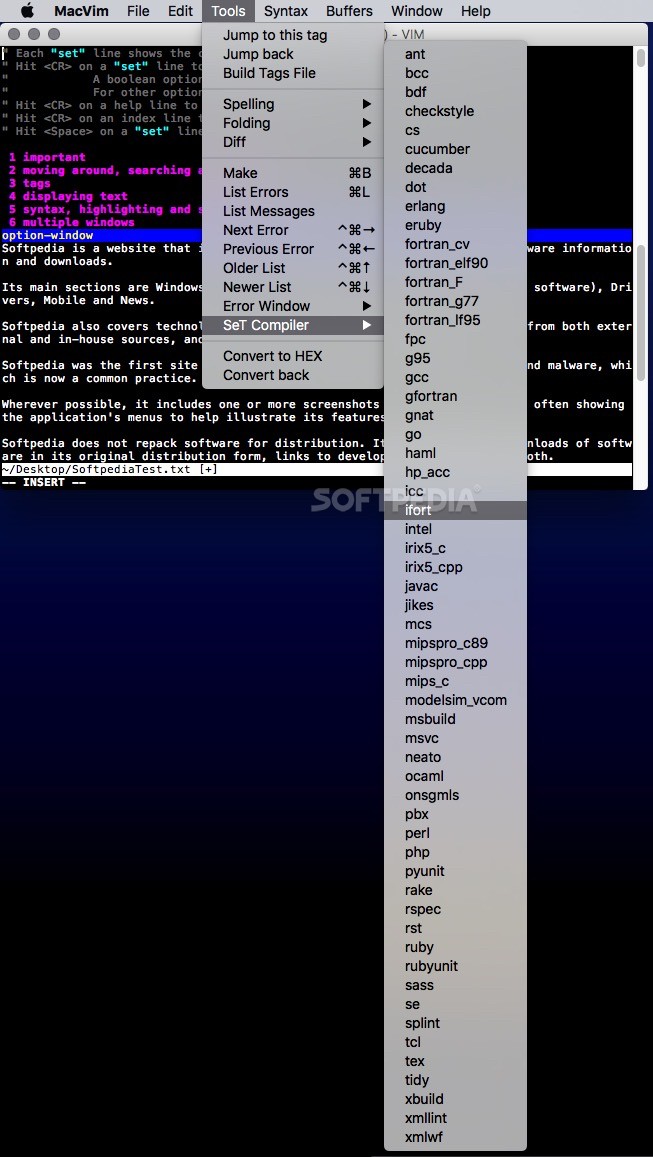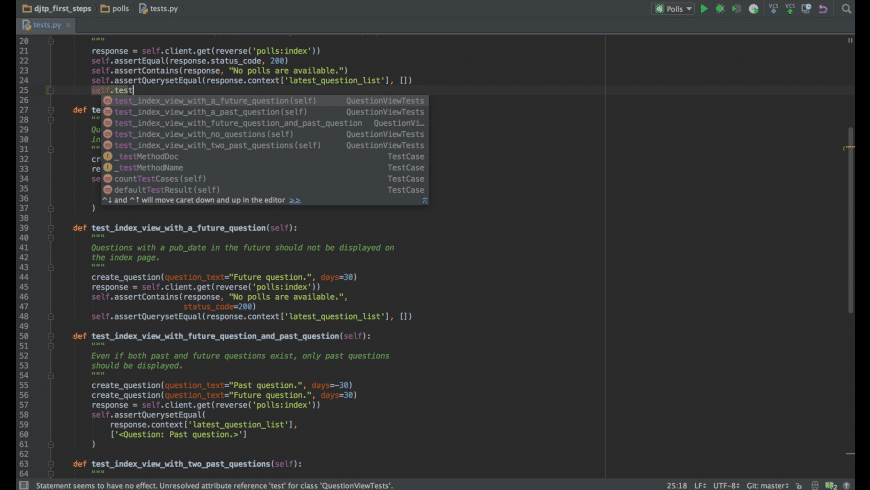Setting up your computer for Vim and Tmux often comes with a few issues. Here's how to manage plugins for Vim and use Tmux to boost your productivity, as well as settle a few common issues.
We'll install:
- Vundle - Plugin management for Vim
- Solarized color scheme
- Tmux - Terminal multiplexer
Vim is a highly configurable text editor built to enable efficient text editing. It is an improved version of the vi editor distributed with most UNIX systems. Vim is often called a 'programmer's editor,' and so useful for programming that many consider it an entire IDE. DinVim aims to provide true macOS experience for Vim users. The software is available for download using the following buttons: View on the App Store. How to install the software? Mac OS X 10.10 Yosemite or a newer macOS. App Store version instructions. Download on the App Store or search “DinVim” in the App Store Mac app.
We'll also figure out some issues Mac and Tmux have with showing 256 color themes.
Install Vundle
- Download Vim Options for macOS 10.7 or later and enjoy it on your Mac. Vim Options is a graphical tool to edit Vim options inside a file like '.vimrc'. Options are defined using 'set' command of the Vim script language.
- The latest version of Vim is 7.3 on Mac Informer. It is a perfect match for IDE in the Developer Tools category. The app is developed by MacVim and its user rating is 4.5 out of 5.
- In my case the file was named Vim.Mac.VsVim-2.8.0.7.mpack. After downloading the file, I opened Visual Studio for Mac, selected Visual Studio - Extensions from the menu to open the Extension Manager pop-up window, clicked Install from file. Button and selected the downloaded.mpack file. Needed to restart Visual Studio to get the extension.

You can install Vundle by cloning it:
Configure Vundle
Once installed, you can configure it.
And follow the installation directions by editing your ~/.vimrc file:
Once this is setup, you can open a new instance of vim and run :BundleInstall:
You'll get a confirmation 'Done' message on the bottom of your screen if all goes well.
Add Solarized Color Theme
Next, we'll add the Solarized color theme. Vundle makes this really easy. Simply add the Github repository name in ~/.vimrc:
Now that we've added the solarized theme, we need to have Vundle install it.
Now open up your Terminal (iTerm2 or Terminal app). If you're on a Mac, you may see something...ugly. I had a terrible background and the colors were completley off. I didn't have 256 color enabled.
Here's what I saw:
To fix that, I finally came across this StackOverflow question, which had the answer waiting.
Change your ~.vimrc settings from above to the following:
Once you start up a new instance of Vim, you should see your new, colored vim!
Onto Tmux!
Let's up our game and get Tmux into the mix. We can use Tmux to open up multiple 'panes' within our shell.
First, install it. On your Mac, you can use Homebrew:
Ubuntu or Debian users can user apt-get:
Great. Now, colors are also an issue when running Vim within Tmux. Let's fix that. Create or edit the file ~/.tmux.conf:
Now we're ready to use Tmux. Start up a new Tmux session:
Next, split the screen vertically so we have 2 panes with this keyboard shortcut:
You can switch between panes with this shortcut:
You can then open up separate files in each! (Or do ... anything really).
More Tmux
Download Mac Operating System Iso
Tmux has Windows, and within the Windows it has Panes. Each Window consists of a set of 1-n Panes.
Tmux also has Sessions. A collection of Windows/Panes live within a Session. You can detach from a Session, leaving it running in the background. You can later re-attach to it, and continue working. This is how people pair program.
Split Screen into 2 Panes:
Split current Pane horizontally into 2 Panes:
Switch between Panes:
Create new Window:
Switch between Windows:
Detach from Session:
Vim Text Editor Mac
Re-attach to a Session:
Create a Session:
Switch between Sessions:
Switch between Sessions within Tmux:
List Sessions:
List all commands:

Scripted!
You can run this bash script on your Debian or Ubuntu server to run the above Vim+Tmux configurations. This might conflict with anything you currently have in your ~/.vimrc or ~/.tmux.conf files (If they already exist). Back them up first.
Further Reading:
